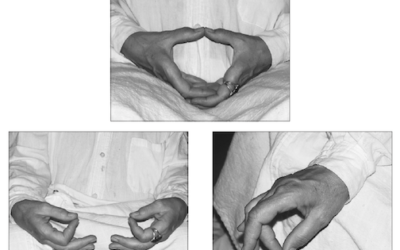THE MEDITATION PAGE AND BLOG



Overview: Keys to Remarkable Journeys
This blog includes items for beginners and items for advanced meditators. This brief overview is about what meditation is, what its effects are, and the major forms of meditation. It draws from diverse traditions and teachers.
Recently “mindfulness” has become popular in the west. The term refers to a form of formal sitting meditation that involves noticing whatever is occurring within you and around you at each moment, and also to maintaining that attitude during daily activities.
Mindfulness is best known as part of Buddhist practice, but its essence was practiced earlier as “witness” consciousness in the Raja Yoga and Tantra Yoga traditions.
Actually, in both Buddhist and Yogic traditions, mindfulness is one of several dimensions of meditative practice. This blog addresses the following:
- Introduction to meditation
- Mindfulness meditation
- Concentrative meditation
- Everyday awareness practices
- Contemplative meditation
- Advanced methods
Concentrative practices (sometimes called “focusing meditation”) help you calm and focus your mind. They give you a handle that makes it easy to keep your thoughts from darting everywhere when that’s not what you want them to do. These practices develop your ability to know where your attention is at any moment, and to be able to place your attention where you want it to be rather than letting your attention be at the mercy of whatever is going on around you.
Mindfulness meditation involves noticing, acknowledging and accepting whatever is going on in you and around you, being more aware of all those inner and outer events. If you can focus on observing your own sensations, emotions, thoughts and actions as they’re occurring, and if you say to yourself, “This isn’t what I want to be doing right now”, then you can change and let your mind do something else.
Everyday awareness practices take mindfulness into daily life. They can also serve as a gateway to formal sitting meditation for people who have a hard time getting right into the latter.
And contemplative meditation moves from the starting-points of concentration and mindfulness to exploring the depths of your psyche and your life. These meditative forms help you explore and examine various aspects of your inner world and your relationship to your outer world and, if you wish, find new directions and possibilities.
Each of the category titles above is linked on the right to a page of blog post titles. (Or will be, as the posts are written.)
Stumbling Toward Enlightenment
There’s also that goal of attaining enlightenment and experiencing cosmic consciousness. You’ve doubtless noticed that totally conscious and cosmically conscious people are hard to find. That includes even certified masters and teachers in this tradition or that one. But moments of enlightenment, and moments of cosmic consciousness—those are possible for almost everyone—even if in the next moment that fleeting instant of incredible beauty and transformed being is forgotten. And some people are certainly more enlightened—or less so—than some others. It helps to remember that the journey itself rather than attaining a goal is the thing, for there will always be a journey.
The methods described in these blog posts are all appropriate for people of any religious outlook or none. With one exception: If you’re so attached to every detail of any religious or secular ideology that you feel threatened by any challenge to any belief that’s part of it, your own mind will cause you discomfort if you try to meditate. Seriously.
A Beginning Meditation
This is a basic breath-counting (or breathing and mantra) meditation. If you don’t already meditate, then if you do no more that this, it will be valuable to you. And if you wish, it can serve as a foundation for the rest of the meditations in the series.
In this you do no more than breathe, notice your breathing, count your breaths, and let go.
As you breathe, on the inbreath [DEMO] you will count One.
On the Outbreath [DEMO] You will notice the words and pictures that appeared in your mind on the inbreath and let go of them. Release all that mental “stuff.” I sometimes think of all that as the contents of a washing machine that’s slopping around in your mind. Everything you see and hear in your mental washing machine, you let it go.
Then you breathe in again [DEMO]. As you do, focus on the number TWO. And as you breathe out [ DEMO] you will find that AGAIN in the course of just half a cycle of breath, words and pictures have formed themselves in your mind. Let go of them. You’re gradually clearing your mind.
And then, number THREE on your inhalation. Once again, visualize the number or hear it in your ears on the inbreath. Then on the outbreath, allow everything that’s formed itself on the inbreath to FLOW AWAY.
Now, continue in the same way with the numbers FOUR through TEN. Just ten breaths in all. This time, I’ll count the numbers and guess that you can breathe on your own at about the same rate I do, counting on the inbreath and releasing on the outbreath for the next seven breaths. And then you can go off and do it by yourself
This is a foundation on which the whole spectrum of meditations is built. It all rests on this foundation of noticing your breaths. And counting them. Or if you prefer, you can move into using a mantra instead of counting .
So here we go, four through ten. Now, be comfortable. Then,
FOUR . . breathing in. Then breathing out and letting go. Sense your breath.
FIVE . . . breathe in. Then as you breathe out let all those words and images go.
SIX … breathing in… then clearing your mind.
SEVEN ..breathing in…letting go …. Noticing your mind being emptier.
EIGHT … in … out
NINE … in.. out
TEN … in… out
Now, Look around you. ou may find that you can see and hear what’s going on around you more clearly and sharply than you could before those ten breaths.
That’s the beginning of meditation. Welcome to the series, and I hope you enjoy the rest.

Guide to the Blogs
Everything else
Why Bother to Meditate?
There are at least six good reasons.
- One is to help you feel better.
- Another is to give you a way to help others who are in distress.
- A third is to work and play more efficiently and effectively.
- A fourth is to avoid boredom.
- A fifth value of some of these meditations is to improve your relationships.
- And a sixth reason is to develop your own personal potential and abilities.
“Avoid boredom” deserves an extra word or two. If you have a set of meditative practices, you can almost never be bored, You have something to do whenever and wherever you are. It’s also worth noting that if you look at very successful people, a surprising proportion of them say that they meditate

For an in-depth description of what meditation can do for you and a systematic presentation of meditative practices, see Matrix Meditations: A 16-Week Program For Developing the Mind-Heart Connection by Yours Truly and Kooch N. Daniels. (Actually, it could turn out to be 16 months or 16 years.) Your local bookstore can order it or you can get either the paperback or e-book at any online bookseller, or from Amazon.com. It is divided into ten short introductory chapters and 65 cells that are analogous to the I. Ching’s 64 hexagrams. It contains both a step-by-step structured program for beginning meditators and numerous practices that advanced meditators are apt to find useful. To my knowledge, it is the best integration of traditional meditative practices with knowledge of modern psychology now in print.
Several dimensions of contemplative meditation are explored and numerous everyday awareness methods presented in two books on the chakras, co-authored with my wife Kooch N. Daniels, that build on Sri Harish Johari’s work. Dutch painter Pieter Weltevrede co-authored Awakening the Chakras with us and beautifully illustrated the card deck that is part of Sacred Mysteries: The Chakra Oracle.
.
Meditation Posts
What’s the best position for meditating?
Description of most body positions suited for meditating and circumstances for using one rather than another.
CONTEMPLATIVE MEDITATION
Describes what contemplative meditation is, what purpose it serves, and how to do it.
INDIA NAMES, CHINA COUNTS: OF MANTRAS AND COUNTING MEDITATIONS
Describes the differences among naming of days of the week and months of the year in India, Thailand, China, Japan, and Vietnam. Connects these with mantra meditation and breath counting meditation. Describes basic meditations of each kind, and pure focus on breathing.
WALKING MEDITATIONS
Instructions for how to do several variations of walking meditation that connects synchronizes breathing and walking. Describes reasons for and benefits of doing it.
EMERGENCY MEDITATION
The process described in this blog is useful when you or another person is extremely stressed or upset and need some way to stop freaking out and calm down. It combines a very simple counting meditation with a mental “letting go” process and muscular relaxation.
MUDRAS AND MOVING MUDRAS
Description of how to use mudras as part of a meditation. Introduces “moving mudras” in which a slight movement of the hand position in rhythm with the breathing can make it easier to maintain focus and reduce the tendency of your mind to drift away during meditation.
VISUAL SPLITTING IN MEDITATION
Visual splitting is an enhancement that can be used with many meditation methods. The overall idea with visual splitting is that if you have one or more “markers” that tell you when you’re maintaining your meditative focus and when you’re not, then it’s easier for you to maintain that focus. This (and other such markers) is something you can do with any meditation that involves maintaining awareness of your breathing – especially any kind of breath-counting or any mantra meditation that includes breath awareness.
Two Minute Meditation
This is for you if you’ve heard that meditation can have positive effects but just haven’t brought yourself to spend the 15 or 20 minutes a day required for a minimal regular meditation session.
MEDITATION III – Mindfulness or Witness Consciousness
"Mindfulness" has become a catch-word in some circles in recent years. Some of those who use the term understand it and some don't. It's a Buddhist term that is differs very little from the Yogic term "witness consciousness." Both involve noticing,...
MEDITATION: THE ESSENCE II – Concentration & Focus
MEDITATION -- THE ESSENCE Basic Meditation Instructions, Part II CONCENTRATIVE MEDITATION Concentrative meditation develops your ability to know what you are doing with your attention at any given moment and to focus your attention (and often that...
MEDITATION – THE ESSENCE: Basic Meditation Instructions I
MEDITATION -- THE ESSENCE Basic Meditation Instructions, Part I INTRODUCTION, & STARTING YOUR SESSION BENEFITS OF MEDITATION Reduce your stress, feel more relaxed, become more focused, centered, and probably more successful, and clean up...











